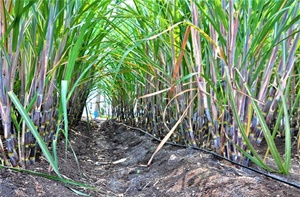Amélioration du rendement et de l'efficacité d'utilisation de l'eau de la canne à sucre sous irrigation au goutte à goutte dans la région de Gharb au Maroc
Résumé
Au Maroc, la rareté de l’eau liée au changement climatique, constitue le facteur limitant principal du développement agricole. Depuis 2008, un programme de reconversion à l’irrigation localisée a été entrepris par l’état pour mieux valoriser et économiser l’eau d’irri-gation. Un essai a été conduit durant deux années sur la canne à sucre dans le Gharb sous un climat méditerranéen avec un sol argilo-limoneux. Les objectifs étaient de déterminer les besoins en eau de la culture, d’optimiser l’EUE et d’évaluer la réponse de la culture à différents apports d’eau en mode d’irrigation localisée. L’expérimentation a été conduite en utilisant la variété “CP70-321” avec un dispositif en blocs aléatoires randomisés, quatre répétitions et cinq régimes hydriques. Les résultats ont montré un effet hautement significatif du régime hydrique sur les rendements en tiges et en sucre et sur la hauteur de végétation. Les besoins en eau d’irrigation sont de 7500 m³.ha-1, mais 5000 m³.ha-1 équivalent à 67 % ETM serait un volume suffisant pour optimiser l’EUE (132 à 157 kg de tiges ha-1.mm-1 et 22,2 à 24,2 kg de sucre ha-1.mm-1). L’irrigation localisée pourrait donc conduire à: i) économiser environ 50 % d’eau apporté comparativement à l’irrigation par aspersion, ii) presque doubler le rendement en tiges et iii) améliorer le rendement en sucre d’environ 8 à 23 tonnes/ha.
Mots clés: Canne à sucre, Efficience d’utilisation de l’eau, Gharb, Maroc
Téléchargements

Comment citer
Numéro
Rubrique
Licence

Revue Marocaine des Sciences Agronomiques et Vétérinaires est mis à disposition selon les termes de la licence Creative Commons Attribution - Pas d’Utilisation Commerciale - Partage dans les Mêmes Conditions 4.0 International.
Fondé(e) sur une œuvre à www.agrimaroc.org.
Les autorisations au-delà du champ de cette licence peuvent être obtenues à www.agrimaroc.org.

